Nanomedicine in cancer therapy: promises and hurdles of polymeric nanoparticles
The limitations of current cancer treatments have stimulated the application of nanotechnology to develop more effective and safer cancer therapies. Remarkable progress has been made in the development of nanomedicine to overcome
[...] Read more.
The limitations of current cancer treatments have stimulated the application of nanotechnology to develop more effective and safer cancer therapies. Remarkable progress has been made in the development of nanomedicine to overcome issues associated with conventional cancer treatment, including low drug solubility, insufficient targeting, and drug resistance. The modulation of nanoparticles allows the improvement of drug pharmacokinetics, leading to improved targeting and reduced side effects. In addition, nanoparticles can be conjugated to ligands that specifically target cancer cells. Furthermore, strategies that exploit tumor characteristics to locally trigger drug release have shown to increase targeted drug delivery. However, although some clinical successes have been achieved, most nanomedicines fail to reach the clinic. Factors that hinder clinical translation vary from the complexity of design, incomplete understanding of biological mechanisms, and high demands during the manufacturing process. Clinical translation might be improved by combining knowledge from different disciplines such as cell biology, chemistry, and tumor pathophysiology. An increased understanding on how nanoparticle modifications affect biological systems is pivotal to improve design, eventually aiding development of more effective nanomedicines. This review summarizes the key successes that have been made in nanomedicine, including improved drug delivery and release by polymeric nanoparticles as well as the introduction of strategies that overcome drug resistance. In addition, the application of nanomedicine in immunotherapy is discussed, and several remaining challenges addressed.
Carmen Paus ... Alessandra Cambi
The limitations of current cancer treatments have stimulated the application of nanotechnology to develop more effective and safer cancer therapies. Remarkable progress has been made in the development of nanomedicine to overcome issues associated with conventional cancer treatment, including low drug solubility, insufficient targeting, and drug resistance. The modulation of nanoparticles allows the improvement of drug pharmacokinetics, leading to improved targeting and reduced side effects. In addition, nanoparticles can be conjugated to ligands that specifically target cancer cells. Furthermore, strategies that exploit tumor characteristics to locally trigger drug release have shown to increase targeted drug delivery. However, although some clinical successes have been achieved, most nanomedicines fail to reach the clinic. Factors that hinder clinical translation vary from the complexity of design, incomplete understanding of biological mechanisms, and high demands during the manufacturing process. Clinical translation might be improved by combining knowledge from different disciplines such as cell biology, chemistry, and tumor pathophysiology. An increased understanding on how nanoparticle modifications affect biological systems is pivotal to improve design, eventually aiding development of more effective nanomedicines. This review summarizes the key successes that have been made in nanomedicine, including improved drug delivery and release by polymeric nanoparticles as well as the introduction of strategies that overcome drug resistance. In addition, the application of nanomedicine in immunotherapy is discussed, and several remaining challenges addressed.
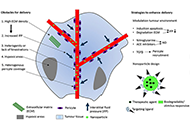 Nanomedicine in cancer therapy: promises and hurdles of polymeric nanoparticlesOpen AccessReviewThe limitations of current cancer treatments have stimulated the application of nanotechnology to develop more effective and safer cancer therapies. Remarkable progress has been made in the development of nanomedicine to overcome [...] Read more.Carmen Paus ... Alessandra CambiPublished: April 30, 2021 Explor Med. 2021;2:167–185
Nanomedicine in cancer therapy: promises and hurdles of polymeric nanoparticlesOpen AccessReviewThe limitations of current cancer treatments have stimulated the application of nanotechnology to develop more effective and safer cancer therapies. Remarkable progress has been made in the development of nanomedicine to overcome [...] Read more.Carmen Paus ... Alessandra CambiPublished: April 30, 2021 Explor Med. 2021;2:167–185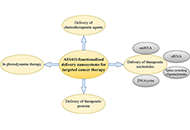 AS1411-functionalized delivery nanosystems for targeted cancer therapyOpen AccessReviewNucleolin (NCL) is a multifunctional nucleolar phosphoprotein harboring critical roles in cells such as cell proliferation, survival, and growth. The dysregulation and overexpression of NCL are related to various pathologic and on [...] Read more.Pooria Safarzadeh Kozani ... Mohammad Tariq MalikPublished: April 30, 2021 Explor Med. 2021;2:146–166
AS1411-functionalized delivery nanosystems for targeted cancer therapyOpen AccessReviewNucleolin (NCL) is a multifunctional nucleolar phosphoprotein harboring critical roles in cells such as cell proliferation, survival, and growth. The dysregulation and overexpression of NCL are related to various pathologic and on [...] Read more.Pooria Safarzadeh Kozani ... Mohammad Tariq MalikPublished: April 30, 2021 Explor Med. 2021;2:146–166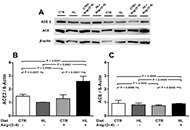 Angiotensin-(3-4) modulates the overweight- and undernutrition-induced ACE2 downregulation in renal proximal tubule cells: implications for COVID-19?Open AccessOriginal ArticleAim: The renal lesions–including severe acute kidney injury–are severe outcomes in severe acute respiratory syndrome coronavirus 2 infections. There are no reports regarding the influence of the nutritional status on the sever [...] Read more.Rafael Luzes ... Adalberto VieyraPublished: April 30, 2021 Explor Med. 2021;2:135–145
Angiotensin-(3-4) modulates the overweight- and undernutrition-induced ACE2 downregulation in renal proximal tubule cells: implications for COVID-19?Open AccessOriginal ArticleAim: The renal lesions–including severe acute kidney injury–are severe outcomes in severe acute respiratory syndrome coronavirus 2 infections. There are no reports regarding the influence of the nutritional status on the sever [...] Read more.Rafael Luzes ... Adalberto VieyraPublished: April 30, 2021 Explor Med. 2021;2:135–145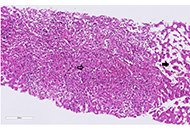 Hepatic manifestations of drug reaction with eosinophilia and systemic symptoms syndromeOpen AccessCase ReportDrug reaction with eosinophilia and systemic symptoms (DRESS) syndrome is a potentially life-threatening drug reaction, which can affect multiple organs. Patients with DRESS syndrome and hepatic manifestations may present alterati [...] Read more.Maria Gabriela Delgado ... Jean François DufourPublished: April 30, 2021 Explor Med. 2021;2:122–134
Hepatic manifestations of drug reaction with eosinophilia and systemic symptoms syndromeOpen AccessCase ReportDrug reaction with eosinophilia and systemic symptoms (DRESS) syndrome is a potentially life-threatening drug reaction, which can affect multiple organs. Patients with DRESS syndrome and hepatic manifestations may present alterati [...] Read more.Maria Gabriela Delgado ... Jean François DufourPublished: April 30, 2021 Explor Med. 2021;2:122–134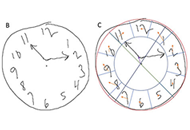 Proof of concept: digital clock drawing behaviors prior to transcatheter aortic valve replacement may predict length of hospital stay and cost of careOpen AccessOriginal ArticleAims: Reduced pre-operative cognitive functioning in older adults is a risk factor for postoperative complications, but it is unknown if preoperative digitally-acquired clock drawing test (CDT) cognitive screening variables, which [...] Read more.Margaret Ellenora Wiggins ... Catherine C. PricePublished: March 05, 2021 Explor Med. 2021;2:110–121
Proof of concept: digital clock drawing behaviors prior to transcatheter aortic valve replacement may predict length of hospital stay and cost of careOpen AccessOriginal ArticleAims: Reduced pre-operative cognitive functioning in older adults is a risk factor for postoperative complications, but it is unknown if preoperative digitally-acquired clock drawing test (CDT) cognitive screening variables, which [...] Read more.Margaret Ellenora Wiggins ... Catherine C. PricePublished: March 05, 2021 Explor Med. 2021;2:110–121